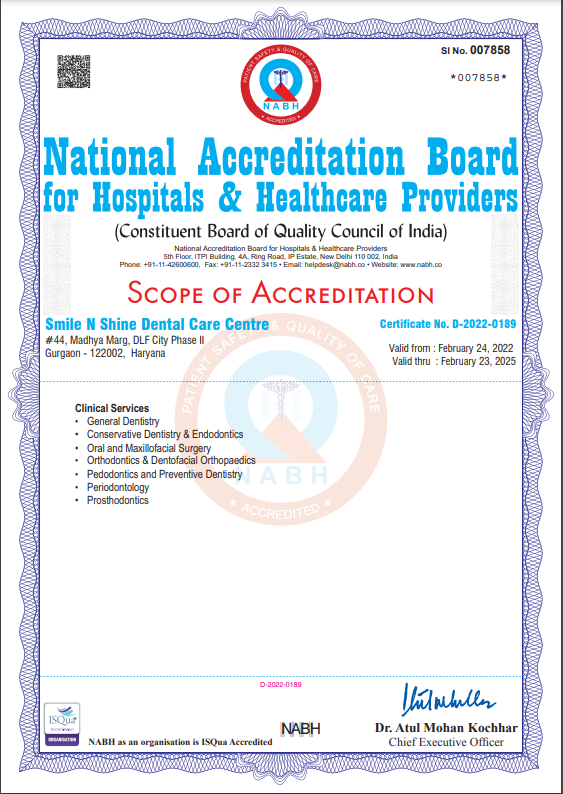Treatment Spectrum
|
Surgical and Non Surgical DentistrySURGICAL AND NON-SURGICAL EXTRACTIONSDental extraction is a process that removes Infected tooth or teeth from the mouth. This treatment is performed for various reasons. Tooth decay that has damaged enough tooth structure to prevent restoration is the most common indication for extraction. This process is most commonly used for problematic wisdom teeth or to make space for orthodontic treatment. Smile 'n’ shine dental care centre is well-equipped with the most modern tools and expertise for easy and efficient dental extractions. Every process here is done under complete asepsis and it is a infection free zone. Surgical extraction is performed by a large team of trained and skilled surgeons. Reasons for tooth extractionThe most common reasons for tooth extraction are damage such as breakage or fracture. Some other possible reasons could be:
Extractions are often divided into two categories including "simple" or "surgical". Simple extractions are performed on visible teeth, usually under local anesthesia and require only use of instruments to elevate and/or grasp the visible portion of tooth. Basically tooth is lifted using an elevator and subsequently using dental forceps, rocked back and forth until periodontal ligament has been sufficiently broken and supporting alveolar bone has been sufficiently widened to make tooth loose enough to remove. On the other hand, surgical extractions involve removal of teeth that is not easy to reach, either because they have broken under the gum line or because they have not arrived completely. In a surgical extraction dentist may elevate soft tissues covering the tooth and bone and may also remove some of the overlying and/or surrounding bone tissue with a drill or osteotome. Often, tooth may be split into several pieces for easy removal. Problems with dental extractionsDental extraction is one of the most common treatments, requested by people, at dental clinics and hospitals. However, root canal is a more effective option to relieve pain from an infected tooth, in most of the cases dental extraction is the only option left. Even though most extractions proceed without any difficulty, some can occur. Most people who have had tooth or teeth extracted know that a certain degree of pain and bleeding is normal. Pain that lasts up to a week or more but is gradually improving and bleeding that continues for up to 12-24 hours but is slowing down should be considered typical and will most likely not require follow-up care. Pain that worsens after two days should be considered abnormal and may require attention of a medical expert. Ache that increases after extraction might be due to a dry socket, usually treated by the dentist rinsing the socket with medicated lotion, packing the area with a medicated dressing and putting the patient on pain relieving pills. Bleeding is another problem that lasts for more than 24-hour or is increasing after some time. This might be a point of serious problem that needs immediate attention from dentist. Persistent bleeding may occur if any blood vessel or tissue is damaged during extraction, if a patient is taking specific kind of medication or has a predisposing medical condition. Extreme bleeding can also be caused by a patient rinsing, spitting, or smoking after the extraction. Dentist can pack and stitch the socket to stop bleeding. |




